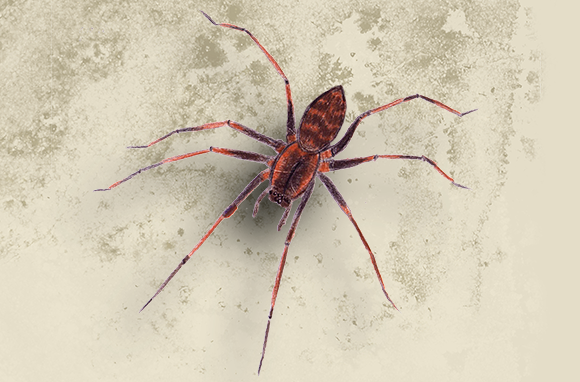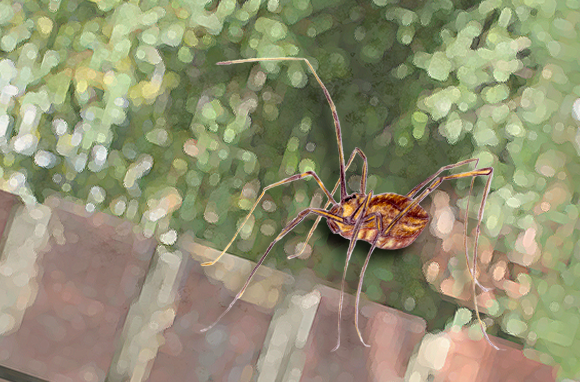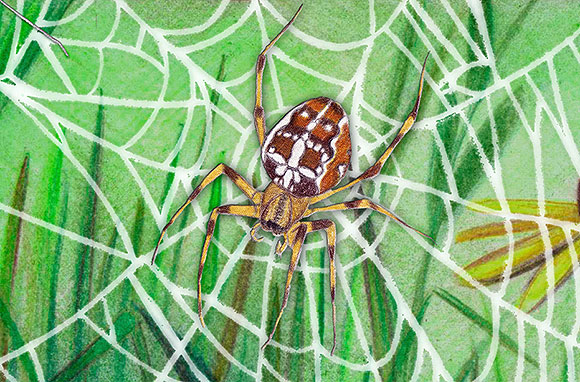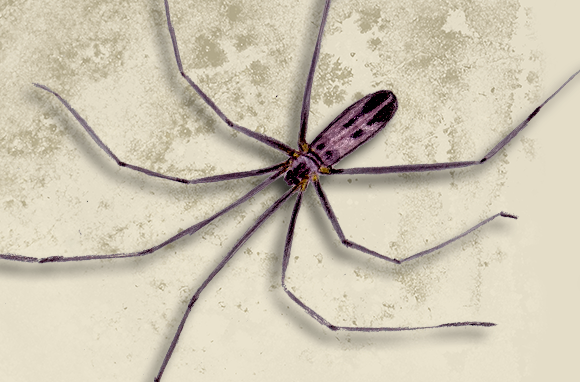Large angle spider
Size without legs males about 10-15mm / females about 12-19mm
Age up to 7 years
Special characteristics nocturnal house spider, builds a funnel web from which it spins trapping threads - not glue threads - in which prey gets entangled, can bite, is not poisonous
Where can they be found? In flats, behind cupboards, under sinks or in old junk (e.g. in the cellar or attic), also in dry, warm bushes, forests
Weavers
Weavers are not actually spiders, but form their own order - weavers. They have no spinning glands and no venomous claws - so they are completely harmless creatures. Unlike weaver spiders, their body is not divided into abdomen and front body.
Where can they be found? Near human settlements, in gardens, on house walls, in parks.
Garden cross spider
Size without legs males about 5-10 mm / females about 12-19 mm
Colour: yellow-brownish to black-brown, name-giving cross pattern of five light to white spots clearly visible
Where can they be found? Almost everywhere. The garden cross spider is probably the best-known and most common wheel web spider in Germany. This species prefers to build its elaborate web close to the ground or at lofty heights. During the day, it usually stays hidden in its hiding place, always keeping in contact with its wheel web via the signalling thread. At night, however, it lies in wait for prey in the centre of its web.
Large trembling spider
Size (without legs): Male about 6-10mm / female about 7-10mm
Special features: Not to be confused with weaver spiders (because the trembling spider has a body divided into abdomen and front body), legs light, thin, up to five times as long as the body; black spots; front body light grey-brown with a darker spot on the back, eyes wide apart
Where to find them: Most common spider species in buildings, usually in corners under the ceiling, behind cupboards or in cellars
Lifestyle: When disturbed, it causes itself and its web to vibrate strongly, blurring the outline of its body and making it appear larger. The delicate trembling spider is a dangerous hunter. Even the large house spider is not safe from it.
Brown orb spider
Size (without legs): Males about 2-4 mm / females about 7-10 mm
Special features: The forebody is light brown in colour with a broad brown longitudinal stripe in the middle. There is a thin, almost black band around the outside of the abdomen. The abdomen is irregularly marked. Its base colour is also light brown. It contains black, white, dark brown and red markings. Their abdomen is often higher than it is long.
Where can they be found? The brown orb spider is native to Germany. It prefers dry terrain such as dry grassland or wasteland. It is common and not endangered.






